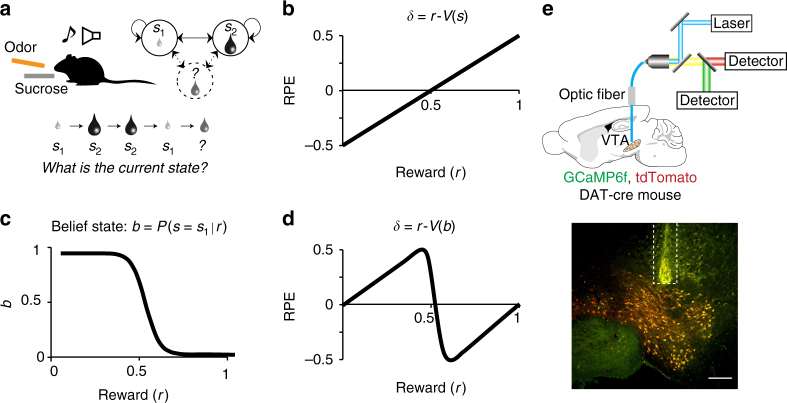Fig. 1.
Task design to test the modulation of dopaminergic RPEs by state inference. a Mice are trained on two perceptually similar states only distinguished by their rewards: small (s1) or big (s2). The different trial types, each starting by the onset of a unique odor (conditioned stimulus, CS) predicting the delivery of sucrose (unconditioned stimulus, US), were presented in randomly alternating blocks of five identical trials. A tone indicated block start. Only one odor and one sound cue were used for all blocks, making the two states perceptually similar prior to reward delivery. To test for state inference influence on dopaminergic neuron signaling, we then introduced rare blocks with intermediate-sized rewards. Using (with reinforcement learning (RL) operating on belief states) or not (with standard RL) the training blocks as reference state for computing the value of the novel intermediate states predicts contrasting RPE patterns (b vs d). b RPE across varying rewards computed using standard RL. Because the same odor preceded both reward sizes, a standard RL model with a single state would produce RPEs that increase linearly with reward magnitude. c Belief state b across varying rewards defined as the probability of being in s1 given the received reward. d RPE across varying rewards computed using the value of the belief state b. A non-monotonic pattern across increasing rewards is predicted when computing the prediction error on the belief state b. e (Top) Population activity of VTA dopaminergic neurons is recorded in behaving mice using fiber photometry. (Bottom) Fiber location above the recorded cells in the VTA, which co-express the calcium reporter GCaMP6f and the fluorescent protein tdTomato (scale bar: 200 μm)

